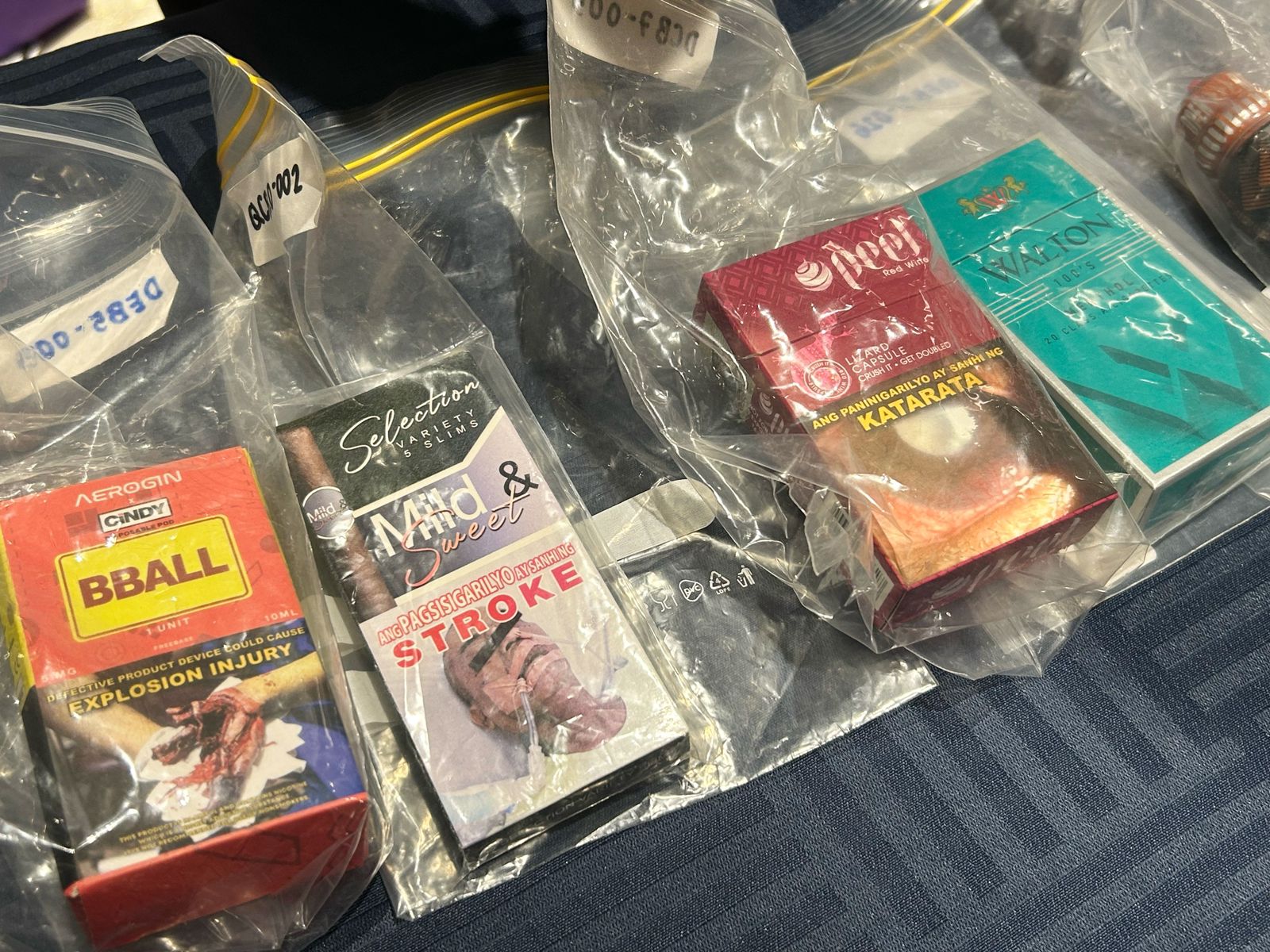window.rapplerAds.displayAd( "middle-1" );window.
rapplerAds.displayAd( "mobile-middle-1" );A trowel (/ˈtraʊ.əl/), in the hands of an archaeologist, is like a trusty sidekick – a tiny, yet mighty, instrument that uncovers ancient secrets, one well-placed scoop at a time.

It’s the Sherlock Holmes of the excavation site, revealing clues about the past with every delicate swipe. In 2017, while excavating a midden in Camaligan, Camarines Sur, one of our graduate students then, Maddie Yakal, waved me over with a mix of curiosity and confusion. She held up a handful of small, circular bones.
“Fish?” she asked, tilting her head. I looked over at my colleague Tom Wake, our resident zooarchaeologist at UCLA, who happened to join us during that field season. Tom squinted, gave a quick nod, and said, “Close, but not quite — it’s stingray vertebra.
”She wasn’t wrong. That moment, standing in the middle of a shell midden (essentially an ancient garbage heap made up of discarded food remains like shells, bones, and charcoal) surrounded by layers of food debris left behind centuries ago, I was reminded of how archaeology can bring the past close to home, sometimes closer than we expect. Here was a dish I had eaten with family while growing up in Bicol, now surfacing as a pattern in the archaeological record.
That is the kind of connection that stays with you.And it’s fitting to revisit this during Filipino Food Month, celebrated every April. While most commemorations feature lechon, adobo, or sinigang, dishes like kinunot remind us that the Filipino palate has much older roots — ones shaped not by cookbooks or colonial kitchens, but by coastlines, estuaries, and traditional knowledge.
Kinunot, usually made with stingray (pagi) or small shark (pating), cooked in coconut milk and spiced with chili, is a staple in many Bicolano households. It’s often paired with malunggay leaves (moringa), its trusty vegetable sidekick. In fact, there’s a long-running Bicolano joke that if you’re headed out to sea, just bring a stalk of malunggay to scare off the sharks (they’ll think you’re planning to turn them into kinunot).
Its flavor — spicy, creamy, and rich — is instantly recognizable. But what makes it especially interesting to archaeologists is its staying power. Long before stingray was shredded into tender flakes and simmered with coconut, it was already a regular part of early Bicolano diets.
Excavations in Camaligan and other sites in the region have shown a consistent pattern. In pre-Spanish layers (those untouched by Spanish pigs or chickens) we find evidence of marine diets dominated by shellfish, fish bones, and, frequently, the remains of rays and sharks. Their cartilage, vertebrae, and tiny tooth-like denticles preserve well and are relatively easy to identify.
In contrast, there is very little evidence of domesticated animals. Pigs and chickens appear much later, mostly during and after the Spanish colonial period.This suggests something important.
Before pork became a symbol of feast and celebration, before chicken adobo appeared on the Filipino menu, people were eating what the sea offered. Shell middens from across Bicol — such as those in Camaligan, Bombon, and Quipayo — show a wide variety of mollusks and reef fish, but stingray and shark bones show up with surprising frequency. These animals weren’t delicacies.
They were staples.There’s a reason for that. Rays and small sharks are relatively easy to catch using traditional fishing methods — hook and line, woven traps, or even shallow-water spears.
They are plentiful in coastal Bicol, especially in river mouths and brackish zones. They also don’t have the many fine bones that make other fish difficult to prepare. Their meat is firm and forgiving, ideal for cooking in coconut milk.
And coconut was never in short supply. The richness of gata not only enhances flavor, but also acts as a natural preservative. In the absence of refrigeration, the fat in coconut milk helped slow down spoilage.
Combine it with chili, and you have a dish designed for taste and practicality.Of course, chili peppers were not always part of the story. They likely arrived in the Philippines sometime in the late 1500s via the Manila-Acapulco galleon trade, or perhaps earlier through the Portuguese via South Asia.
Early kinunot may have relied on local heat sources like ginger, pepper leaves, or even mustard-like plants. But the dish adapted, as all living traditions do, taking on new ingredients while retaining its core: marine protein and coconut.In the archaeological record, these foodways show up as patterned behaviors: repeated disposal of marine remains, clustered hearths, grinding stones possibly used for spices or leaves.
Kinunot, or at least something like it, was likely consumed by families sitting beside rivers and estuaries, cooking in clay pots, scraping coconut with hand-held tools. It was a dish shaped by geography, ecology, and ingenuity.window.
rapplerAds.displayAd( "middle-2" );window.rapplerAds.
displayAd( "mobile-middle-2" );Fast forward to today, and kinunot has survived waves of change: Spanish colonization, American packaged foods, and now, fast food globalization. It remains a distinct marker of Bicolano identity. But it also raises timely questions.
Some of the species used in kinunot, particularly sharks, are under pressure from overfishing. While traditional fisherfolks often catch small, non-endangered species like the bluespotted ribbontail ray or the spadenose shark, commercial fishing and poor regulation have endangered others.This brings us to the present challenges of food heritage.
How do we honor tradition while protecting biodiversity? How do we pass on dishes like kinunot without exhausting the ecosystems that made them possible in the first place?These questions are not new. But archaeology offers a long view that can guide more thoughtful responses. Ancient communities in Bicol likely didn’t overfish because they couldn’t.
Fishing gear was limited. Populations were smaller. And food diversity – shellfish, crabs, reef fish – meant that no single species was over-relied upon.
These earlier food systems were more seasonal, responsive to climate, and attuned to landscape change. There is wisdom there, embedded in how people adapted, not just survived.This is one reason I’m excited to be working with John Sherwin Felix, a passionate food advocate focused on food justice and expanding access to culturally meaningful meals.
Together, we’re launching a community-engaged project that maps food memory across regions, combining archaeological findings with lived experiences. We’re interested in how food travels with people, how traditions change or endure, and how stories around food help sustain community knowledges.Food memory is not just nostalgia.
It’s infrastructure. It tells us how communities sustained themselves, what values they held, and what adaptations worked. By integrating archaeology with food mapping, we hope to contribute to conversations around food security, ecological conservation, and cultural preservation in a more grounded way.
April’s Filipino Food Month is the perfect time to reflect on this. Beyond celebrating flavors and cooking styles, we have the opportunity to ask where our food traditions come from – and where they might go. Kinunot is, thus, a window into thousands of years of living by the sea, adapting to change, and making food that made sense.
So, yes, kinunot tells a story. One of stingray vertebrae buried in middens, of coconut trees swaying along the coast, of clay pots over open flames. It reminds us that food is knowledge, and archaeology is one of the ways we can recover it.
Not to freeze it in time, but to understand how it might continue to nourish us in the years ahead. – Rappler.com Stephen B.
Acabado is professor of anthropology at the University of California-Los Angeles. He directs the Ifugao and Bicol Archaeological Projects, research programs that engage community stakeholders. He grew up in Tinambac, Camarines Sur.
Follow him on bluesky @stephenacabado.bsky.social.
.
Technology

[Time Trowel] Kinunot: The stingray that time did not forget

Kinunot has survived Spanish colonization, American packaged foods, and, now, fast food globalization. It remains a distinct marker of Bicolano identity.














